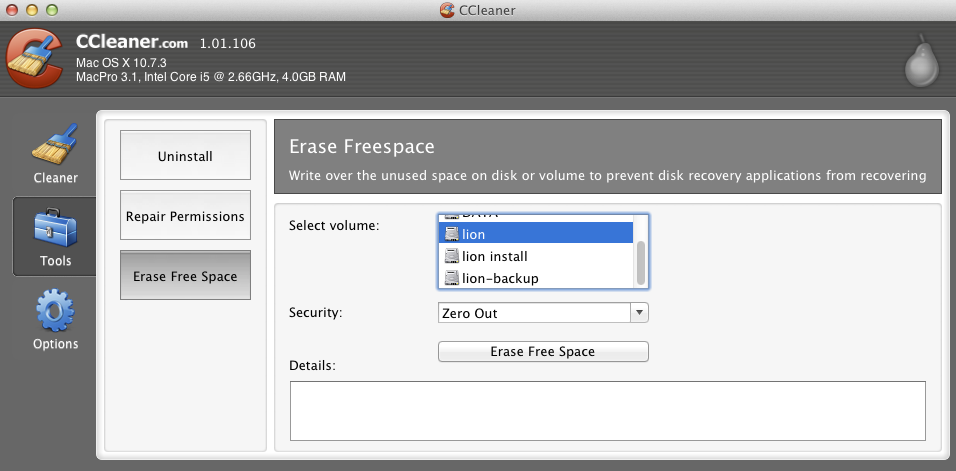The Secure Erase Free Space feature in Disk Utility on your Mac added a layer of privacy and security to file deletion. The feature allowed you to overwrite the free space on a drive to prevent. Delete your temp files. When it comes to wasting space on your scratch disk, the worst culprit is often Photoshop's own temp files. If Photoshop isn't going to get rid of them, I guess you’re going to have to do the job yourself.
- Your operating system will handle the deletion of purgeable data in the background with no user intervention necessary. There may be times when you want to manually delete purgeable space on your Mac. How to Manage Mac Storage. Storage space often comes at a premium on well-used Mac computers.
- A fun and visual way to delete system storage on Mac. System storage can occupy tens of gigabytes of space on your Mac for Time Machine backups and cache files. It should be managed by macOS so you’re never short of space. But if you want to do a system storage cleanup, or just free up more space on your Mac, give CleanMyMac X a go.
| Click here to return to the 'Recover from an incomplete Erase Free Space process' hint |
You might want to stick with the 7-pass format next time... :p
/var/root/Library/Caches/TemporaryItems/
if erasing free space on the root volume, or in:
/Volumes/YourVolume/.TemporaryItems/folders.UIDNumber/TemporaryItems/
if erasing free space on another volume, where 'YourVolume' is the name of the volume being erased, and 'UIDNumber' is the UID number of the user performing the erase.
This is covered in an article on MacGeekery:
http://www.macgeekery.com/tips/quickie/recovering_from_a_failed_secure_erase_free_space
-systemsboy
Interesting discussion... I didn't know about Disk Utility creating a huge file. But I must be missing something... why not just reformat the disk (this time without zeroing) if you want to get rid of the file?
Reformatting the disk would require a reinstallation of everything, OS included.
Why reformat an entire drive just to simply erase a hidden Temp File_
That degrades your HD for no good reason_
Gubluntu was on the right track_
That's like 'oh - I installed a piece of software on my machine that i don't want anymore and instead of uninstalling it - why don't I simply reformat my hard drive' -- it makes no sense_
If you run out of gasoline in your car are you going to throw out the engine and get a new one after every tank of gas ?
Most any repair or diagnostic process will create a Temp File of some sort [which would be akin a B-Tree Directory only more complicated] so that what ever process is happening can keep track of what it's doing independently form the system that it's running on_
Norton Utilities and Systemworks did this back in the day - any Installer App does this_ Every time you download a file off the internet - it gets stored to a temporary file until the entirety of it's contents is downloaded_ Compression software does this [Stuffit Deluxe]_ SO if you goto download a file form the internet and losed your connection are you going to wipe your HD everytime and re-install your entire system ?
Read a couple of online searches - find the invisible offending file and trash it_

Wonderful Tip! I often do hasty things like that, and it's good to know there is an easy fix.

Quicker:
Click the desktop.
Do Apple-Shift-n
press Enter or Reurn
Do Apple-Delete
You just created an untitled folder and deleted it.

Ah! We're only talking about Secure Empty Trash in the Finder!
I thought this whole discussion was about formatting a disk (with Disk Utility set to zero out the disk).
How To Erase Free Space On Mac
No, we're talking about the 'Erase Free Space' function of the Disk Utility application, not the disk formatting function or the Finder's Secure Empty Trash command.
How To Free Up Space On Mac
I did the same thing and was left with no remaining memory on my hard drive. I tried your suggestions, but that did not work either. Any other hints?